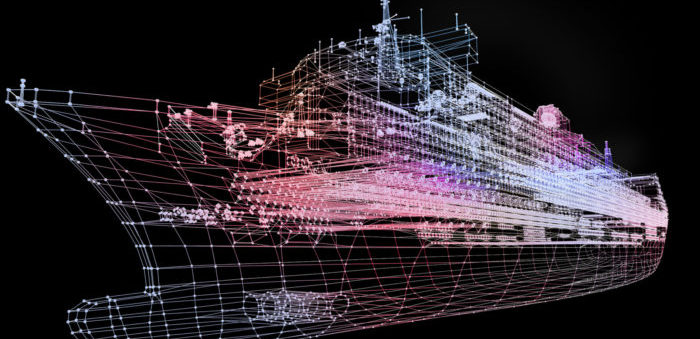Port State Control inspection records suggest safety standards are improving, but a closer examination reveals areas for improvement, says Paul Stanley, CEO, Global Navigation Solutions. Mr. Stanley believes that enhancing data transparency would play a pivotal role in improving the overall shipping safety.
Transparency of data is key to improving safety in shipping and at first sight, the statistics suggest that the industry is on the right course in terms of compliance. In 2018, Port State Control inspectors in the USCG, Paris and Japan MOUs made more vessel inspections and found fewer deficiencies.
The number of annual inspections has risen by 4% over the last four years while the number of deficiencies has fallen by 8% over the same period.
[smlsubform prepend=”GET THE SAFETY4SEA IN YOUR INBOX!” showname=false emailtxt=”” emailholder=”Enter your email address” showsubmit=true submittxt=”Submit” jsthanks=false thankyou=”Thank you for subscribing to our mailing list”]
It’s evidence that the effectiveness of Port State Control has improved since authorities started sharing data and making it publicly available, because deficient owners have fewer places to hide from inspectors, enforcement bodies – or shippers and charterers.
This data demonstrates that while the headline figure is encouraging, there are issues that lie behind the results that need continued vigilance. It also demonstrates the continued importance of data to the safety management process for shipowners and operators.
As the shipping industry becomes more digitalised and embraces a higher level of data sharing in order to achieve a ‘digital business mindset’, so the need for accurate data and actionable information grows too.
Last year’s Global Maritime Forum meeting in Hong Kong identified data sharing as having the potential to overcome fragmentation in maritime safety and how shipping could establish a platform that enables international bodies to collect, analyse and publish safety-related information.
From the PSC data GNS has analysed, sourced from the combined MoU organisations, there is a clear need for this global data stream – and to make it as widely available as possible if we are to achieve further improvements in safety performance.
As might be expected, lifesaving appliances and fire safety measures were the biggest causes of deficiencies in 2018. Some 39% fewer navigation related deficiencies were recorded last year compared to 2014, suggesting that the move to digital navigation has made it easier for vessels to comply.
Issues with Nautical Publications were the third most likely cause of a deficiency in 2018, accounting for 39% of navigation-related deficiencies, perhaps because they are easiest to identify. However, whereas paper chart-related deficiencies fell by 66% over that period, issues related to ECDIS and Electronic Navigation Charts increased by a factor of nearly four as more of the fleet transitioned to digital navigation.
Managing ENC data should be relatively straightforward – though our research has shown that many operators tend to buy too many ENCs and not always the data they actually need.
However, it is clear from digging a little deeper that the industry still has an issue with navigational safety. If we combine all the defects reported in the Safety of Navigation categories, they dwarf the top two categories, despite being much easier to rectify.
It seems obvious that ships will benefit from a single view of their environment in terms of availability of critical voyage and safety data. But according to our research the missed opportunity goes beyond failure to capitalise on just-in-time delivery of navigation data for operational reasons.
Vessel inventories are often not being regularly reviewed against routes, Flag, Port State or technical library requirements and the software installed onboard to help navigate safely isn’t being fully exploited.
Using this data operators are provided with information on which vessel types – and which flags – are most likely to have deficiencies recorded. Data analysis can also demonstrate the ports at which inspection activity is strongest. Between 2016 and 2018, vessels sailing into Singapore, New Orleans Louisiana and Novorossiysk were most likely to receive the attention of the inspectors.
The first quarter of 2019 has tragically demonstrated how much work is still needed to improve shipping safety. Our belief is that the digital trend is so well established that more owners are recognising the advantage that data gives them, not just in operational efficiency, but in safety too.
For that, shipowners need the full picture on inspection data and the ability to establish connectivity between reported issues. By creating a detailed picture, vessel by vessel and across a fleet, it is possible to identify defects and spot trends – and put resources in place to address issues before they become deficiencies.
The views presented hereabove are only those of the author and not necessarily those of SAFETY4SEA and are for information sharing and discussion purposes only.
About Paul Stanley, CEO, Global Navigation Solutions
 Paul Stanley is the CEO of Global Navigation Solutions since January 2015. He has more than 25 years of experience in managing technology, software and services. Mr. Stanley was the founder and CEO of Moneybox plc, after which he joined First Data. Paul Stanley was also the CEO of ReD, a company aiming to prevent fraud in payments, which was sold to ACI Worldwide in 2014.
Paul Stanley is the CEO of Global Navigation Solutions since January 2015. He has more than 25 years of experience in managing technology, software and services. Mr. Stanley was the founder and CEO of Moneybox plc, after which he joined First Data. Paul Stanley was also the CEO of ReD, a company aiming to prevent fraud in payments, which was sold to ACI Worldwide in 2014.






























































